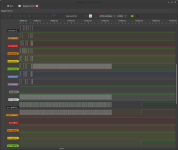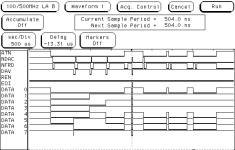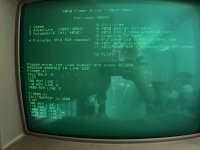WaveyDipole
Experienced Member
Thank you for the confirmation as well as the additional traces.Yes, I confirm that only connecting the Flash Drive and logic analyzer to the 4054 GPIB still has the same hang on BOLD, BAPPEN and same wrong result on BAPPEN - looks like BOLD with the three line BINARY test program file you posted.
The waveforms for BOLD and BAPPEN appear to be identical, and these in turn, appear to be the same as the ones from the 4924, although I have yet to complete my study the waveforms in full detail.
The curious thing now is that I am running the same code on my 4051 as you are on your 4054 (and presumably your 4052), but my trace does not show a UNT+UNL followed by CLOSE then EOI after the program has been transmitted. Does this mean that the 4051 simply does not send any of these? The transmission just ends and there is nothing further (see attached graphic). Why would sending UNT+UNL then CLOSE make a difference and cause the 4054 to hang? I am uncertain of the answer at present but perhaps a more detailed study will reveal something.
Attachments
Last edited:




